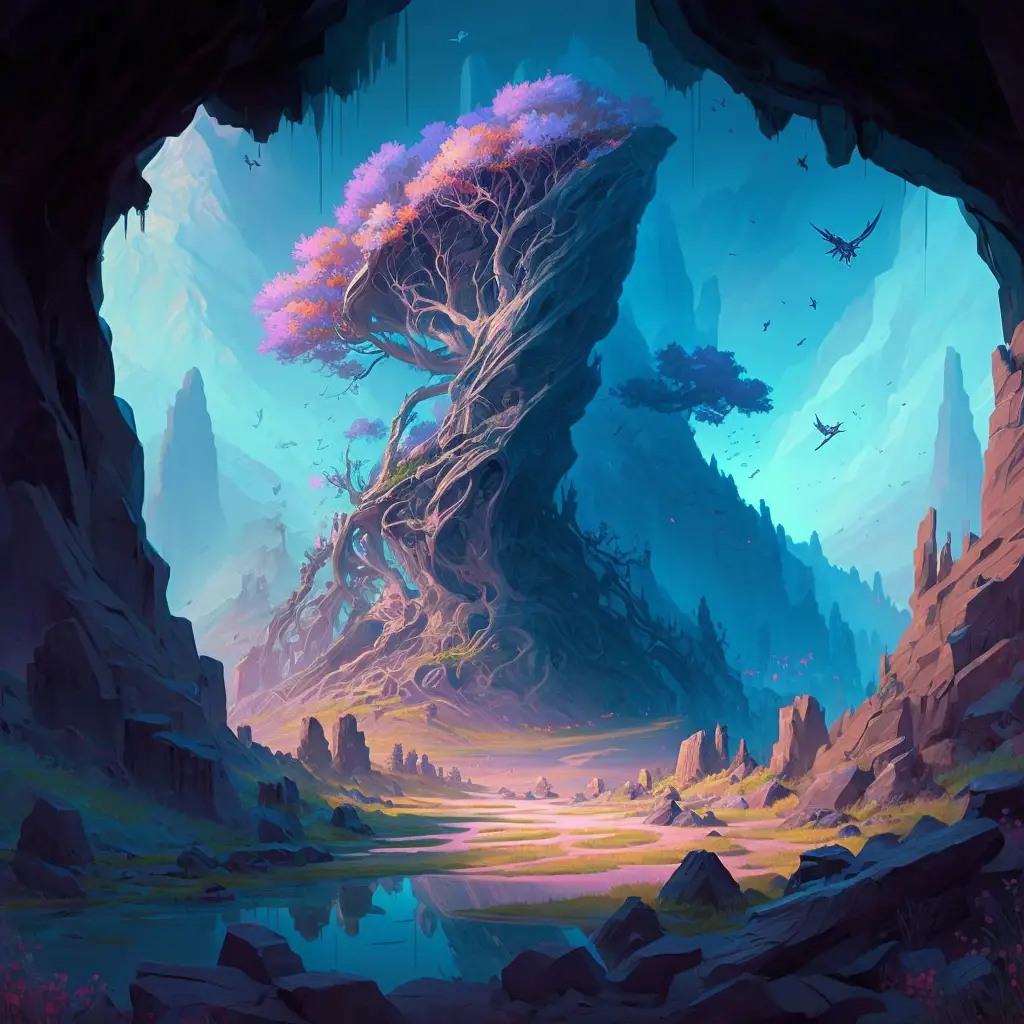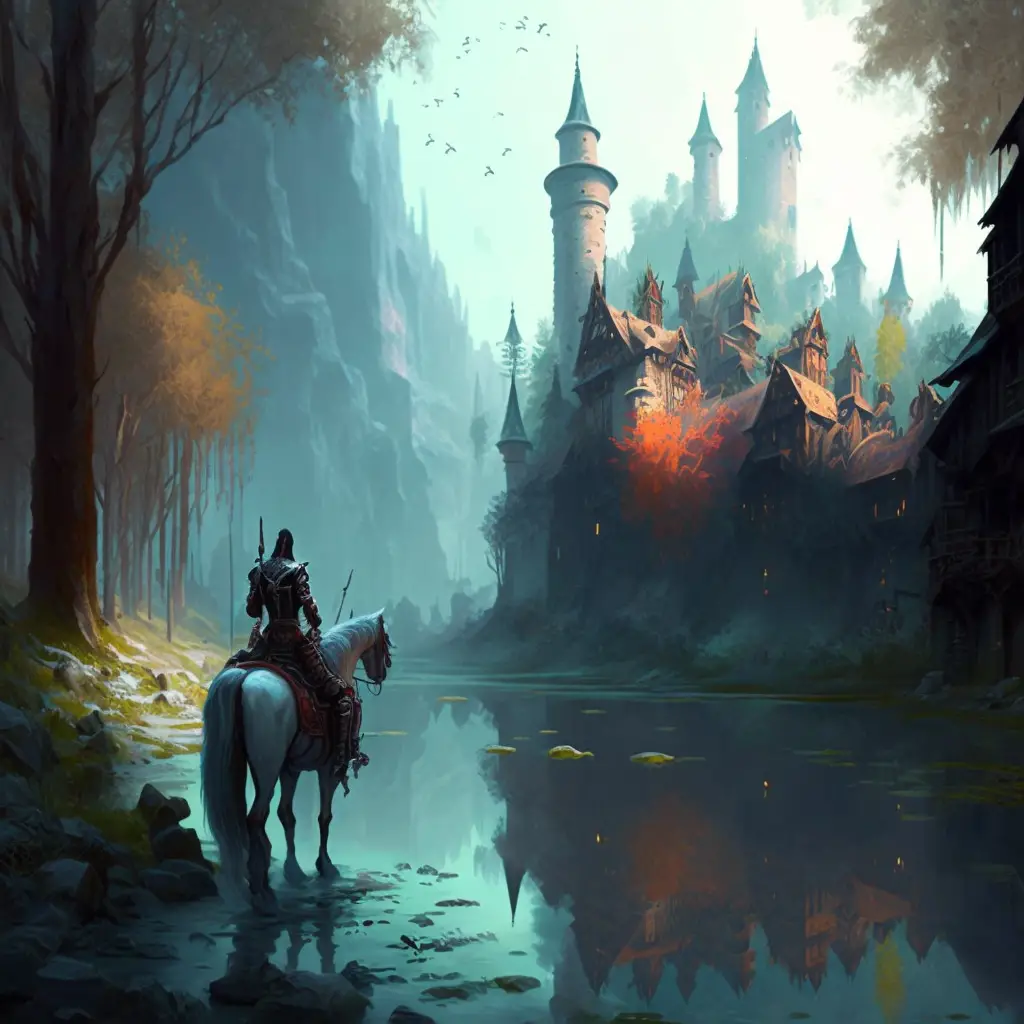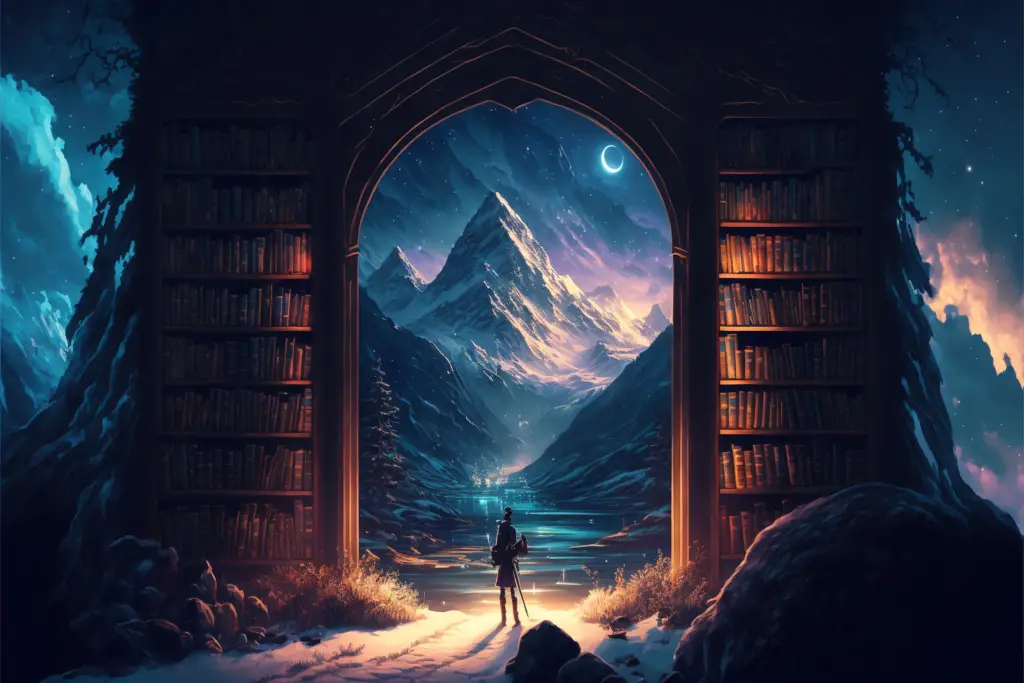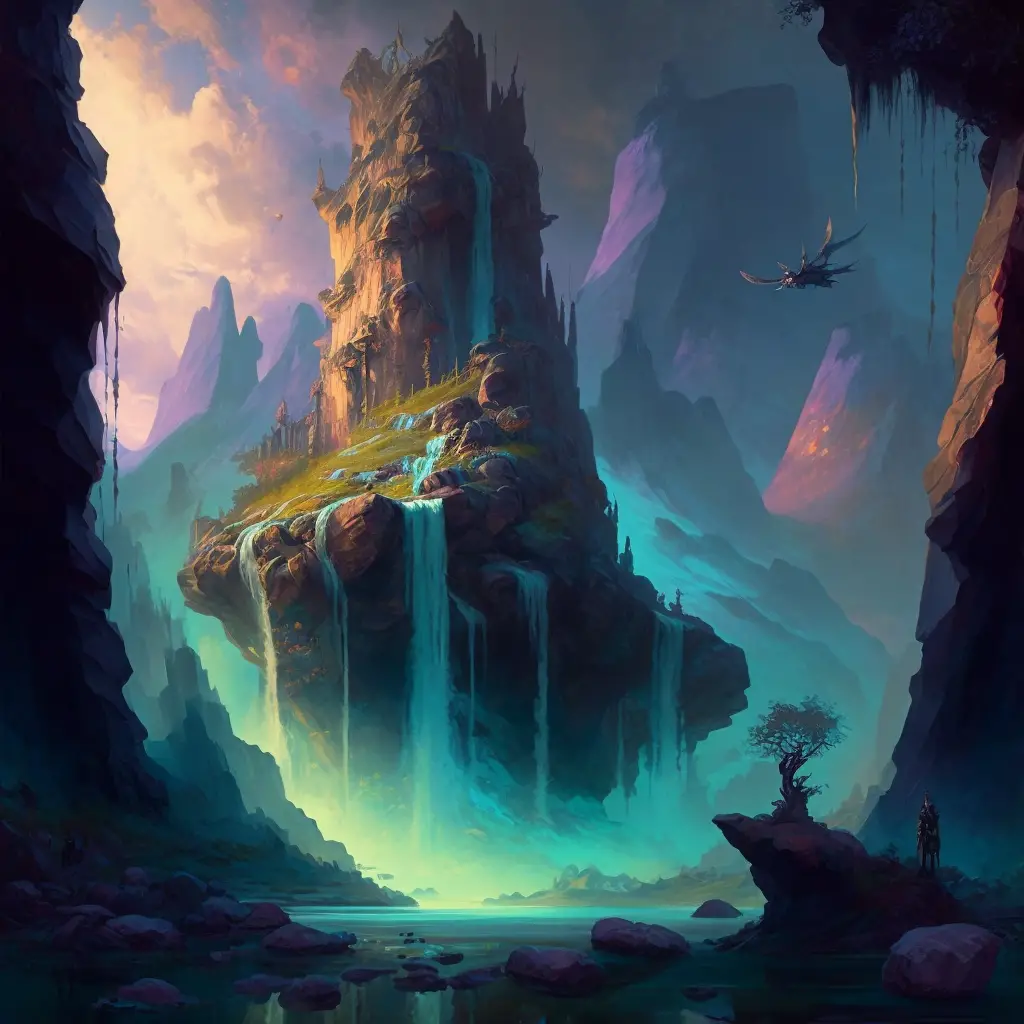Fantasy fiction provides a wonderful escape to another world; your imagination can create and add details to the author’s descriptive framework. By definition, fantasy employs our ability to imagine improbable and unlikely things and is not limited to one subgenre.
While a lot of fantasy is set in medieval times, fantasy is not restricted to dragons, knights, and their medieval counterparts. There are many other subgenres of fantasy to suit your appetite for magic, new worlds, quests, and fantastical characters.
That’s the beauty of fantasy: nothing is out of the realms of possibility. By hitching a ride on the conjurings of an author’s imagination, you get to travel to amazing places with characters of all shapes, sizes, and abilities and be part of a different world for a time until you have to come back to reality, that is. Meh.
Fantasy Offers So Much More Than Medieval
Many of us grew up with fables and fairy tales of the Grimm brothers, Western mythologies, and folklore set in this period, often set in a medieval setting. This structure provides a plausible setting, allows for magic and inexplicable occurrences, and a dose of anarchy if you like.

J.R.R. Tolkien, seen as one of the pillar authors of fantasy, wrote his popular Lord of the Rings books in a medieval setting. His framework has since been used by many other authors writing their fantasy novels. The highest form of flattery is imitation; however, the preponderance of medieval fantasy books has limited the view of what fantasy is and can be.
A lot of medieval fantasy stories have been turned into movies or animations. Featuring royalty, arranged marriages, witches, wizards, dragons, and a strong patriarchal element, they have been popular among young and older audiences. If your imagination wants to explore beyond those elements, many worlds are waiting for you; you need to know the portals.
Medieval And Other Sub-Genres Of Fantasy
The sub-genres of fantasy are ever-growing due to authors who have and are still publishing their wonderful musings. A fantasy needn’t be limited to one subgenre; it can spill over into others. Below are some of the popular subgenres of fantasy with examples of their authors and titles.
Medieval Fantasy Or Arthurian Fantasy
King Arthur has inspired many tales, many of which are set in medieval times. He’s a popular king with a noble cause which he carries out with the help of his knights and some magic – all excellent fodder for a great fantasy. The Color of Dragons by R.A. Salvatore & Erika Lewis and The Guinevere Deception by Kiersten White are examples of Arthurian fantasy.
High Or Epic Fantasy
Sometimes, medieval fantasy fits into this subgenre due to noble characters saving the world from great events or evil, traps, or politics. Perhaps the most well-known high or epic fantasy author is J.R.R. Tolkien, with The Lord of the Rings. More recently is Game of Thrones, by George R.R. Martin. Hollywood has turned their books into blockbusters, as with most good reads.
Low Fantasy
Low fantasy fiction is where magic enters the otherwise-normal world as we know it. J.K. Rowling’s Harry Potter has to deal with the muggles, and then you get Mr. Wednesday, a former god and king of America featured in American Gods by Neil Gaiman.
Urban Fantasy Or Contemporary Fantasy

Contemporary fantasies are set in modern times and often in urban settings. Harry Potter and Mr. Wednesday could also find themselves in this subgenre, along with Stephanie Meyer’s Twilight and the Dresden Files series by Jim Butcher.
Sword And Sorcery
This heroic fantasy involves sword-wielding individuals on a violent or treacherous personal adventure rather than saving the world from certain demise. Romance, magic, and the supernatural are often elemental in these stories. The Coming of Conan the Cimmerian by Robert E. Howard is an example of such a story.
Fables
Fables are short stories that have a lesson or a moral attached. Fables are considered a subgenre of fantasy because humanized animals, objects, and nature are used as the characters. Aesop wrote many fables, including The Tortoise and the Hare and The Lion and the Mouse.
Fairy Tales
Fairy tales are not limited to an audience of children. They are based on folklore, a motif, and have a plot; they are not limited to princes saving damsels in distress in medieval settings. The Wonderful Wizard of Oz by L. Frank Baum and The Hobbit by J.R.R. Tolkien are examples of fairy tales.
Superhero Fiction
Costumed crime-fighters in their various settings are the main characters of these fantasy stories. Examples include Renegades by Marissa Meyer and After the Golden Age by Carrie Vaughn.
Magical Realism
Magical realism uses magic to point out details of reality. Kafka on the Shore, written by Haruki Murakami, and One Hundred Years of Solitude by Gabriel Garcia Marquez are examples of magical realism.
Portal Fantasy

As you can imagine, there’s a portal that takes the character(s) and reader into a different world. Examples include Alice in Wonderland by Lewis Carrol and The Lion, the Witch, and the Wardrobe (the Chronicles of Narnia series) by C.S. Lewis.
Young Adult And Children’s Fantasy
Children have great imaginations, and Roald Dahl has written a host of wonderfully imaginative books suitable for a young audience. Miss Peregrine’s Home for Peculiar Children, written by Ransom Riggs, or Children of Blood and Bone by Tomi Adeyemi, may be suited for a more mature audience.
Historical Fantasy
This subgenre might overlap as authors choose historical elements from different ages in their stories. Examples of historical fantasy include She Who Became the Sun by Shelley Parker-Chan and Gods of Jade and Shadow by Silvia Moreno-García.
Comic Fantasy
Douglas Adams, with his Hitchhikers Guide to The Galaxy, and Terry Pratchett’s Discworld series provide amusing page-turners for those who enjoy a light-hearted escape from reality.
Science Fantasy
This hybrid subgenre mixes the speculative with science fiction. City of Golden Shadow by Tad Williams, and Dark War by Glen Cook are two examples of science fantasy.
Gothic Fantasy And Dark Fantasy
With eerie, dark settings, gothic fantasy often involves macabre elements and passionate emotions like pleasure, horror, and terror. Examples of gothic or dark fantasy include The Vampire Lestat by Anne Rice and House of Salt and Sorrows by Erin A. Craig.
Grimdark Fantasy
As the name suggests, this fantasy subgenre has a grim and dark tone. Grimdark also employs realism (e.g., flawed heroes or useless leaders), and the protagonists are often faced with failed missions or temptation between good and evil, for example. The Blade Itself by Joe Abercrombie and Prince of Thorns by Mark Lawrence are examples of grimdark.
The New Weird
A relatively new subgenre, New Weird, lets loose on the weird and speculative elements of the imagination. Speculative creatures are reimagined, and elements in the story are unreal. Examples of new weird fantasy are Escaping Exodus by Nicky Drayden and The Vorrh by Brian Catling.
5 Common Characteristics Of Medieval And Other Fantasy Fiction
For fiction to be deemed fantasy, some elements or characteristics are common. As you have seen, there is a whole fantasy universe beyond medieval.
1. A Magic System And Magical Forces

As we know, magic is not limited to wizards, witches, or the like. Interestingly, should a fantasy rely heavily on magic, technology should be limited in the story. Clarke’s Third Law states, “Any sufficiently advanced technology is indistinguishable from magic.”
2. A Detailed Setting Or New World
Fantasy subgenres include all sorts of settings, including futuristic, modern, dark, urban, historical settings, parallel universes, and even a flat planet called Discworld that rests on the backs of four elephants that stand like pillars on the back of a giant turtle.
3. A Complex Cast Of Fantastical Characters
Enter the aliens, vampires, underground creatures, modified people and avatars, little kids with superpowers and emotional scars, and scorned or noble adults with a mission – the list is endless and utterly wonderful.
4. A Central Conflict Or Dangerous Quest
Medieval fantasy often includes knights saving princesses from fire-breathing dragons. What about stories of gritty princesses saving dragons from overweight, fire-breathing knights gone rogue? While there is always a quest or honorable task in fantasy, it needn’t follow the common fairy tale recipe of boy-saves-girl-from-evil-being.
5. A Power Structure Or Form Of Government
The narrative that is often followed in fantasy can include one or more of the following, and again, is not limited to Medieval:
- Man vs. himself
- Good vs. evil
- A quest for power or knowledge (heroic or villainous)
- Individual vs. society
- Man vs. nature
- Coming of age
- Tradition vs. change
- Betrayal
- Love
- Unlikely or reluctant hero(es)
- An epic journey
Conclusion
Medieval fantasy is one of many subgenres of fantasy fiction and does not define fantasy as a genre. A fantasy needn’t be confined to one subgenre but can spill over into the other subgenres while employing the five common elements of a fantasy story. It all depends on the author, your imagination, and your interpretation.

